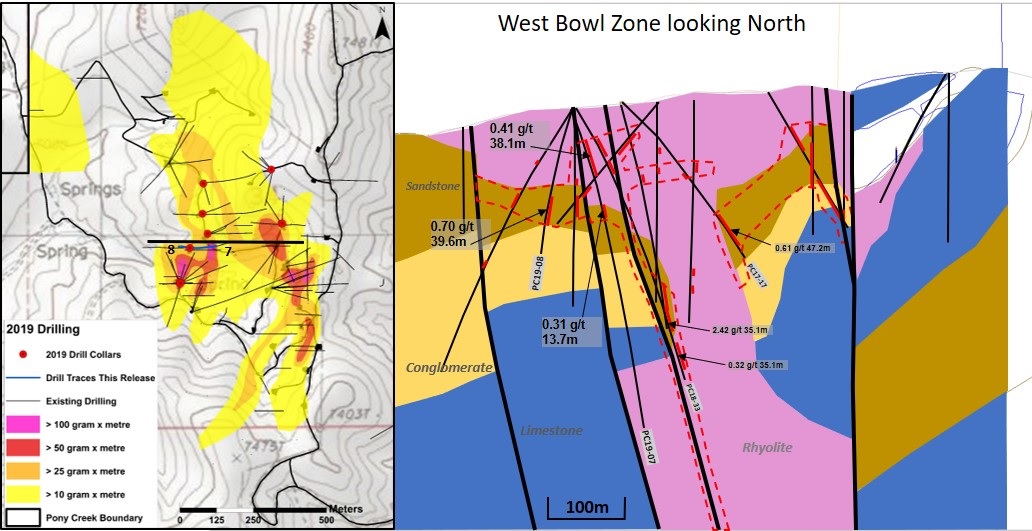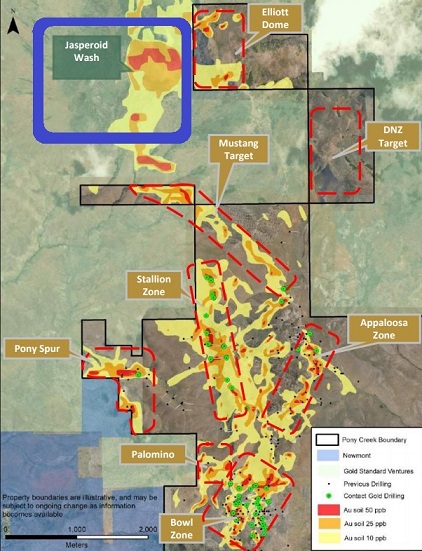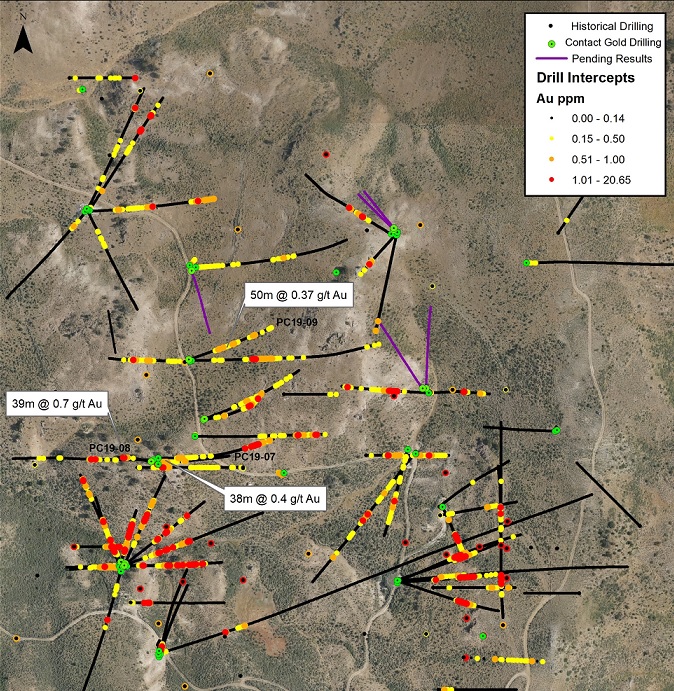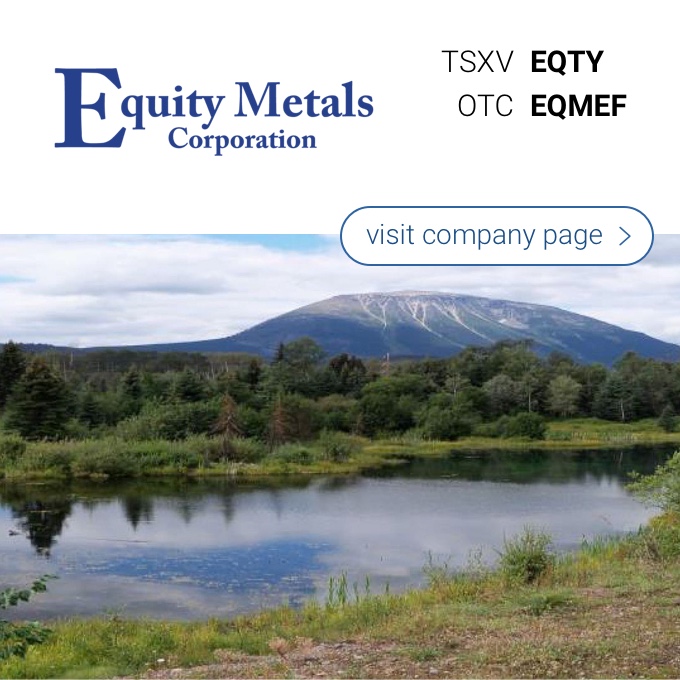
Contact Gold (C.V) continues its winning streak at Pony Creek where it has now encountered gold mineralization in 96 holes of the 102 holes that have been drilled since 2017. Not every hole contained economic-grade gold, but as we explained last year, the entire Pony Creek area appears to be a ‘blanket’ of gold mineralization but now it’s up to Contact Gold’s exploration team to determine which zones could be mined at a profit. We also shouldn’t forget to keep the bigger picture in mind as neighbour Gold Standard Ventures (GSV.TO, GSV) has just raised C$21M and is now gearing up to publish a maiden resource on its Jasperoid Wash Zone, which is bordering the Contact Gold claims.

The two batches of exploration results that was recently published contains six holes drilled at the Bowl Zone, which is the zone where the majority of the historical estimate is contained. None of the holes are ‘killer holes’, but almost 23 meters containing 0.58 g/t gold, almost 26 meters containing 0.71 g/t gold and 32 meters containing 0.51 g/t gold are viable in Nevada (although the 0.51 g/t intercept very likely is too deep to be mined successfully at the current gold price considering that interval only starts at 230 meters down hole).
Holes 4 and 5 encountered pretty consistent mineralization throughout thick zones, and although the assay results from hole 6 weren’t highlighted, it was interesting to see Contact Gold also encountered gold mineralization there as well. Granted, nothing to get excited about from a grade perspective, but this gold was drilled in an area where no gold mineralization was modelled and this could have a positive impact on the strip ratio and economics of a potential future mining operation.
And just yesterday, Contact Gold followed up on this with the assay results of holes 7-8-9 which all encountered gold mineralization as well. Holes 7 and 8 were infill holes so finding more gold wasn’t exactly a surprise but it’s always nice to see that in hole 7 the 36.5 meter thick interval (there seems to be a math error in the company’s bullet points) starts just 38 meters from surface, confirming the consistency of the mineralization while hole 8 provides important data for the interpretation of the mineralized structure of the shallow oxide zone (and it sounds like it shouldn’t be too difficult to quickly increase the confidence level of the tonnage around hole 8). Additionally, it’s particularly intriguing to see oxidation at those depths.

Hole 9 was intended to step out towards the northwest and considering the 50 meters of 0.37 g/t gold (followed by a deeper zone of almost 11 meters containing 0.49 g/t gold) are just 25 meters from the known gold-bearing rocks, this lower grade material would certainly be qualified as viable rock. This hole ended in mineralization and this once again points to a thick oxidized zone.
Contact Gold continues to find gold almost everywhere it’s looking and after scoring a 94% success ratio in 2017 and 2018, its success ratio is 100% for far this year. Now it will be up to VP Exploration Vance Spalding and his technical team to put all the pieces together.
Disclosure: The author has a long position in Contact Gold. Contact Gold is a sponsor of the website.

